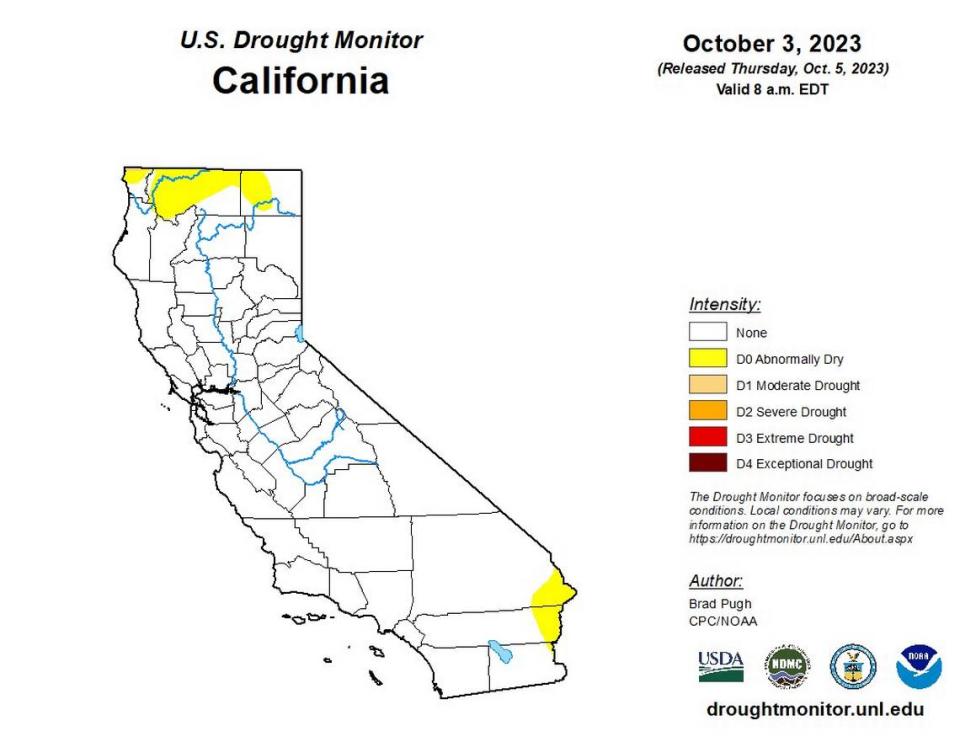California drought map shows where stubborn conditions remain after a wet water year
There’s no more drought in California, except for a sliver in the most northwestern portion of the state.
California is 99.93% drought-free, according to a Thursday update from the U.S. Drought Monitor. But Del Norte County reentered drought status in August after having been drought-free since January.
Approximately 3,000 people remain in drought areas, according to the U.S. Drought Monitor — a significant decrease from roughly 9,800 people in September and about 903,000 people in August.
The update showed 0.07% of California still has “moderate drought,” down from 0.22% on Sept. 5.

The state has been free of “severe,” “extreme” and “exceptional” drought conditions since April.
Drought conditions briefly spiked to 0.24% on Sept. 19 before decreasing to less than 0.1% one week later for the first time since February 2020.
Roughly 6% of the state remains in “abnormally dry” conditions for the seventh week in a row. Before that, 25% to 29% of the state had been abnormally dry from May to mid-August.
Where do reservoir conditions stand?
California’s water year wrapped up last weekend with well-above-normal precipitation totals due to a string of aggressive atmospheric rivers in January.
“We’re looking much better from a reservoir storage standpoint — much better right now than we were a year ago today,” said hydrologic forecaster Brett Whitin with the California Nevada River Forecast Center.
In January, the state endured record-breaking rainfall that caused flooding, left people without power, destroyed homes and killed close to 20 people, including several in Sacramento County. Winter storms that continued through March created the deepest snowpack recorded across the Sierra Nevada in at least 40 years.
Water year 2022-23 ended this weekend (Sept 30) with above normal precipitation for most of CA (except far Nrn) and for SW and NE NV. Over 40 inches above normal in some areas of the Srn Sierra and Big Sur Coast and Santa Ynez and San Bernardino Mtns. #cawx #nvwx #cawater pic.twitter.com/V7OT8TJ5YA
— NWS California-Nevada RFC (@NWSCNRFC) October 2, 2023
A large amount of precipitation measured at higher elevations came in the form of snow, said Whitin, who analyzes both short- and long-range forecasts for the water supplies of major reservoirs across California.
The snowflakes were colder than the rain and generated a record-breaking snowpack in the southern Sierra.
What do you want to know about life in Sacramento? Ask our service journalism team your top-of-mind questions in the module below or email servicejournalists@sacbee.com.

